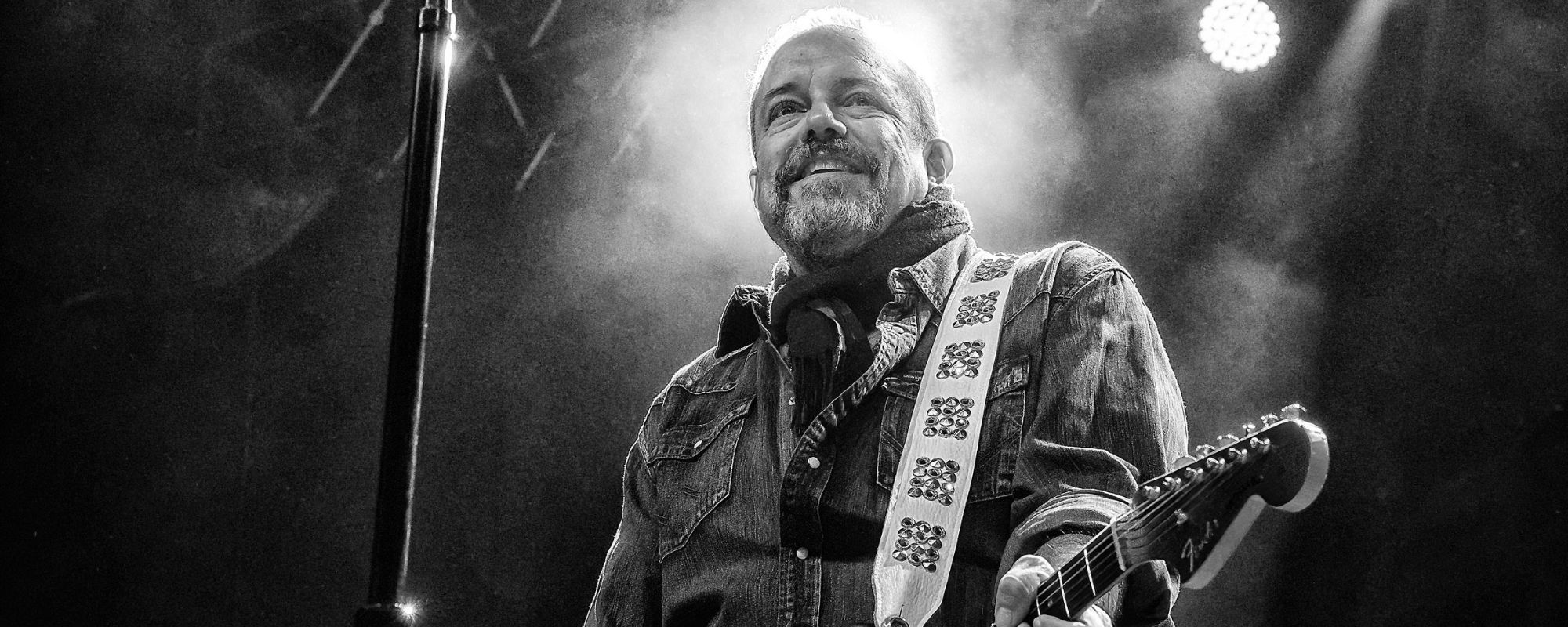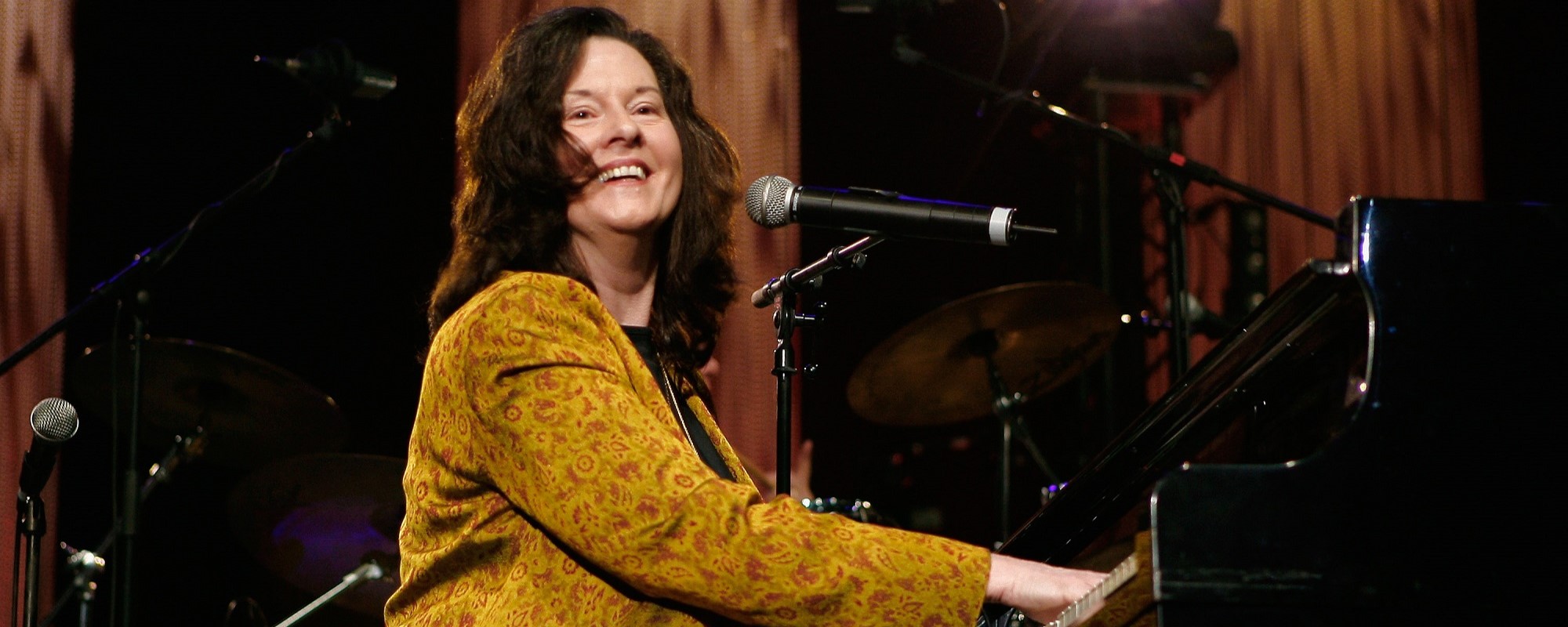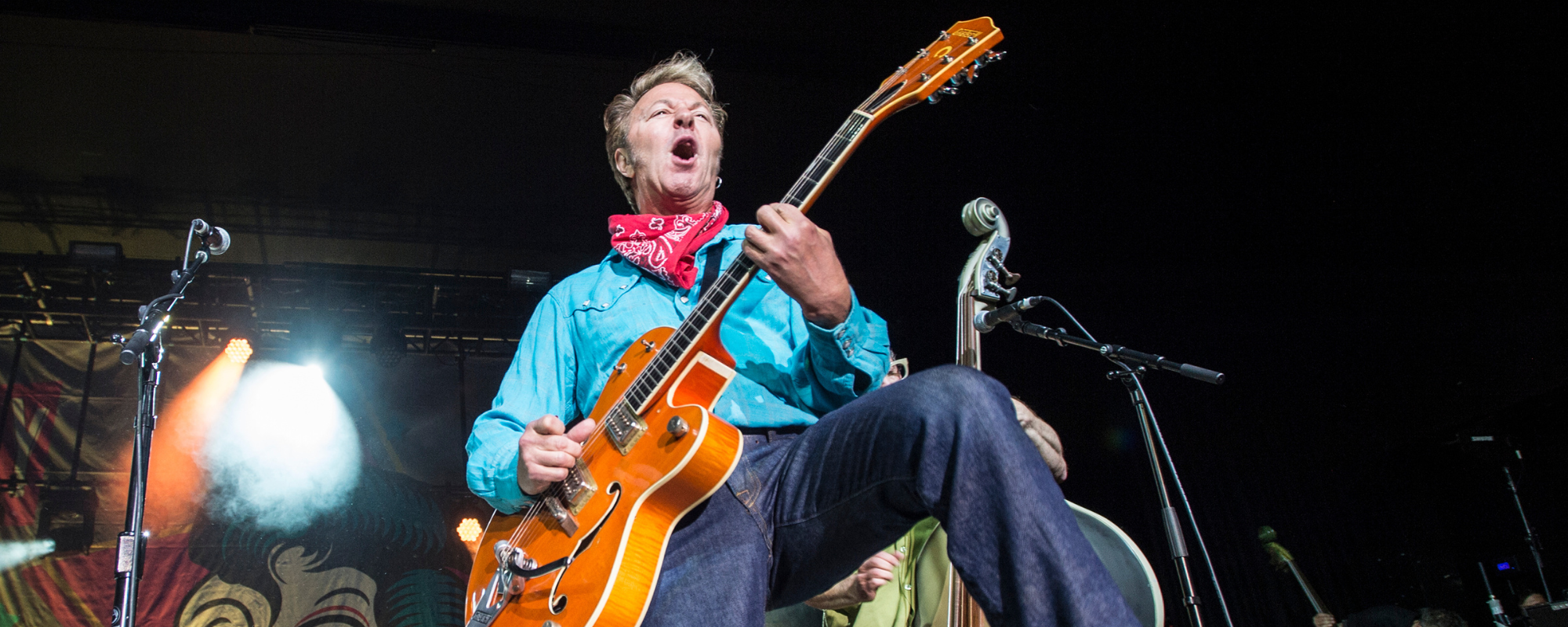Today (February 11, 2025) marks what would’ve been rockabilly legend Gene Vincent’s 90th birthday. Vincent was born Vincent Eugene Craddock in Norfolk, Virginia.
Videos by American Songwriter
At age 17, he dropped out of high school and enlisted in the U.S. Navy. When he was 20, he shattered his left leg in what he said was a motorcycle crash, although there are alternate accounts of how the injury occurred. Vincent would wear a brace on the leg for the rest of his life.
[RELATED: The Meaning of “Be-Bop-A-Lula” by Gene Vincent and Why It’s Still a Mystery Who Wrote It]
Around this time, Vincent was discharged from the Navy and got involved in the Norfolk music scene. With his backing group, The Blue Caps, Gene won a talent contest organized by a local DJ, “Sheriff Tex” Davis, who became his manager.
After securing label deal with Capitol Records, Vincent and His Blue Caps recorded “Be-Bop-a-Lula” in 1956. The song went on to become Vincent’s biggest hit and an all-time rockabilly classic.
Vincent enjoyed success with several more rockabilly-style tunes during the late 1950s and early ’60s. In April 1960, Vincent was touring the U.K. with fellow rockabilly star Eddie Cochran. Vincent and Cochran were traveling in a private taxi that was involved in a high-speed crash. Gene sustained multiple injuries, while Eddie died of brain injuries the next day.
Vincent struggled with alcohol and drug issues for much of his life. He was involved in frequent altercations where he threatened other people with guns. On October 12, 1971, he died of a ruptured ulcer and heart failure. He was 36.
Posthumous Honors
In 1997, Vincent became the first artist inducted into the Rockabilly Hall of Fame. He was inducted into the Rock & Roll Hall of Fame the following year. The Blue Caps were subsequently inducted into the Rock Hall in 2012.
In commemoration of Vincent’s milestone birthday, here’s a look at four of his classic songs:
“Be-Bop-a-Lula” (1956)
“Be-Bop-a-Lula” originally was chosen to be the B-side of Vincent and His Blue Caps’ first single, a provocative tune called “Woman Love.” Many radio stations were hesitant to play “Woman Love,” so Vincent’s label then changed “Be-Bop-a-Lula” to the A-side.
Many people thought “Be-Bop-a-Lula” was an Elvis Presley song when they heard it, including, allegedly, Elvis’ own mother.
“Be-Bop-a-Lula” peaked at No. 7 on the U.S. singles chart, and No. 16 in the U.K.
Paul McCartney said the record was the first he ever bought, and The Beatles frequently played the song live during their early years. John Lennon recorded a version of “Be-Bop-a-Lula” for his 1975 solo covers album, Rock ‘n’ Roll. McCartney later played a cover of the tune to kick off his 1991 appearance on MTV’s Unplugged performance series.
The song was inducted into the Grammy Hall of Fame in 1999.
“Lotta Lovin’” (1957)
“Lotta Lovin’” was Vincent’s second big U.S. hit, reaching No. 13 on the pop singles chart, and No. 7 on the R&B tally. In Canada, the single peaked at No. 2. Vincent and the Blue Caps performed the infectious tune during their first appearance on the American Bandstand TV show.
“Lotta Lovin’” was later covered by Don McLean on his 1978 album Chained Lightning.
“Dance to the Bop” (1957)
“Dance to the Bop” was Vincent and His Blue Caps’ follow-up to “Lotta Lovin’.” The song was Vincent’s last Top-40 hit in the U.S., peaking at No. 23 on the singles chart. It also reached No. 6 on the Canadian chart.
“Pistol Packin’ Mama” (1960)
Vincent had a bit more chart success in the U.K. than in the U.S. His last Top-20 hit across the pond was “Pistol Packin’ Mama,” which reached No. 15 on the U.K. singles tally in 1960.
Vincent’s version of the song featured British musician Georgie Fame on piano.
“Pistol Packin’ Mama” was written by Al Dexter, who released a chart-topping version of the hillbilly/honky-tonk tune in 1943. That same year, Bing Crosby and The Andrews Sisters released their own hit rendition of the song.











Leave a Reply
Only members can comment. Become a member. Already a member? Log in.